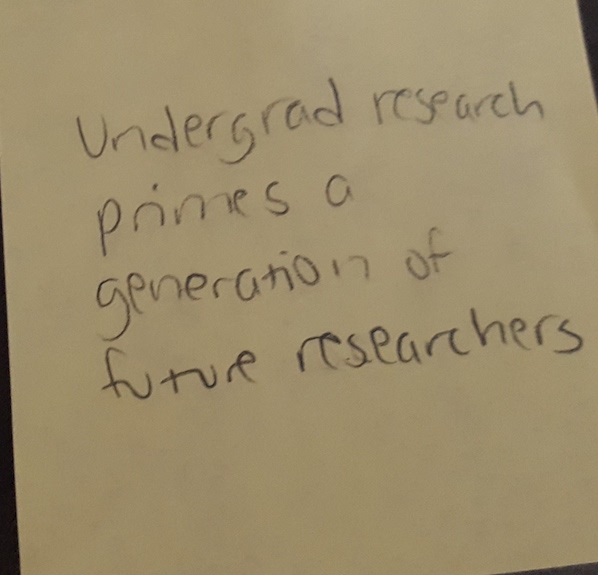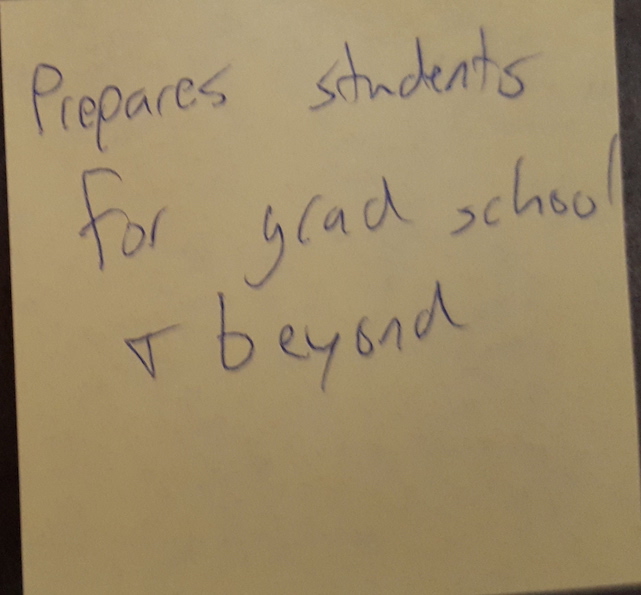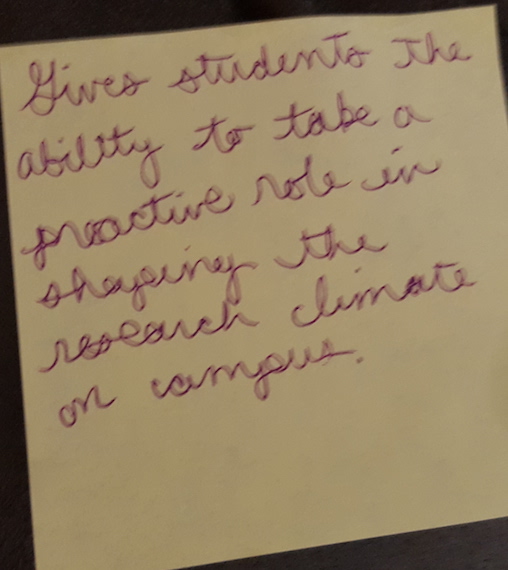This semester I had the privilege of teaching “Academic Editing and Publishing,” a one-credit hour course for the Indiana University Journal of Undergraduate Research (IUJUR) student editorial board. I co-taught the course with a current undergraduate student and the former editor-in-chief of IUJUR, Sonali Mali. The purpose of the course was twofold: to give students a practical skillset for publishing a multidisciplinary undergraduate scholarly journal at Indiana University while also informing students of larger conceptual academic publishing issues.
Striking a balance between practical fundamentals—for example, learning the ins and outs of our publishing platform and evaluating submissions using IUJUR-specific rubrics—with larger concepts was sometimes challenging. Overall, I think that students appreciated the authentic learning experiences that resulted from using an active journal as a tangible example throughout the course.
I learned a lot about myself as an instructor and the importance of librarian perspectives in undergraduate publishing education. Library publishers are experts in ethical publishing practices, open access funding, and various peer review models. Students were most passionate when we discussed the cost of information, open access publishing, and new publishing innovations, including post-publication peer review, data publishing, and including 3D and media in traditional journal publishing. I was excited to talk about these developments in the context of the work that IU Libraries is pursuing and several of the case studies we discussed in class were pulled from work that the Office of Scholarly Publishing (OSP) and IU Press is currently engaged in.
The Importance of Undergraduate Research

Throughout the course, I learned about the importance of undergraduate research and the integral role that IUJUR editors play as ambassadors for undergraduate research at Indiana University. I kicked off the first session of our course with asking students to articulate why undergraduate research was important. Students shared that IUJUR gave IU students a voice and presence on a research-intensive campus. They explained that an institutional commitment to undergraduate research provided space for all students to ask their own research questions and share their perspectives. They also noted that IUJUR gives student editors and authors access to faculty advisors, tangible career preparation, and opportunities to refine their voice and collaboration skills. Here were a few of my favorite responses from this activity:


These responses align with the growing body of literature that discusses how impactful and effective undergraduate research is. The Council on Undergraduate Research supports institutions of all sizes and missions that provide some kind of undergraduate research opportunity for faculty and students to collaborate on. They have a variety of publications, many of which are freely available to access. Some of the benefits of intensive undergraduate research that CUR has identified include:
Enhances student learning through mentoring relationships with faculty
Increases retention
Increases enrollment in graduate education and provides effective career preparation
Develops critical thinking, creativity, problem solving and intellectual independence
Develops an understanding of research methodology
Promotes an innovation-oriented culture
Similarly, undergraduate research has been called a “high-impact practice” or HIP. George Kuh wrote a landmark paper for the Association of American Colleges and Universities (AACU) on high-impact educational practices in 2008. When researching why intensive undergraduate research, service learning, learning communities, and other learning opportunities were particularly effective, he found several similarities between HIPs (pgs. 14-17), including:
An extensive investment from students
Interaction and relationship building between peers and with faculty to solve “substantive” or real-world problems
Exposure to diverse perspectives and viewpoints
Consistent feedback to foster improvement and growth
Kuh’s list applies to the intensive work that IUJUR authors and editors do to publish a multidisciplinary journal regularly.
Throughout the course I always tried to come back to our first session and the reasons that students identified for why undergraduate research is important. I can now articulate that the product–the final research output that others can read and cite–is only a piece of the puzzle. The process that IUJUR student editors and authors go through is just as fundamental. The process is where learning takes place. It’s where we train future researchers, scholars, and citizens to think critically about access to research and how we evaluate scholarship. It’s where we build relationships with students that transform their future career paths and broaden and enhance their existing interests. I am thankful to play a small part in the IUJUR student editors’ process and be part of a campus that prioritizes undergraduate research.
Additional resources:
- View the syllabus for “Academic Editing and Publishing”
- View IUJUR’s most recent issue
Additional reading on undergraduate research journals:
- Dawson, D. D., & Marken, L. (2017). Undergraduate Research Journals: Benefits and Good Practices of Involving Students in Content Creation and Other Scholarly Communication Activities. WILU 2017 Conference, University of Alberta. https://era.library.ualberta.ca/items/4bc36372-2c56-4ac8-94ea-a4eb722874f4/download/a8dd0f70-8df3-4c23-adda-82e2a7888e7f
- Riehle, C. F. (2014). Collaborators in Course Design: A Librarian and Publisher at the Intersection of Information Literacy and Scholarly Communication. In 2014 LOEX Conference Proceedings. http://docs.lib.purdue.edu/lib_fsdocs/119/
- Weiner, S., & Watkinson, C. (2014). What do students learn from participation in an undergraduate research journal? Results of an assessment. Journal of Librarianship and Scholarly Communication, 2(2). http://doi.org/10.7710/2162-3309.1125
Leave a Reply